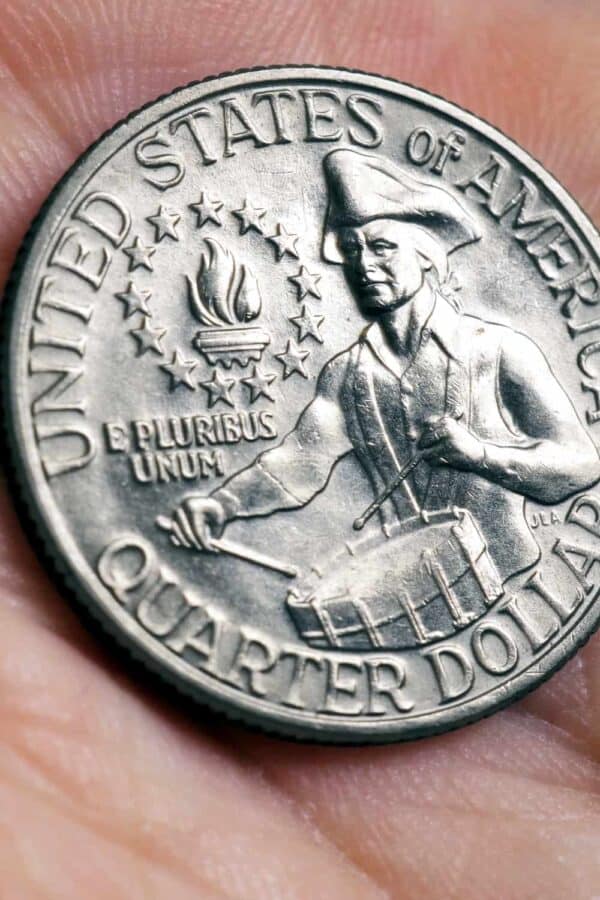Have you ever stumbled upon a coin that seems to be more than just pocket change? The Bicentennial Quarters, minted in 1976 to celebrate America’s 200th birthday, are one of those fascinating pieces of currency that can be worth a lot more than their face value. Many people recognize these quarters, but few know that some can fetch prices exceeding $40 million in the collectible market. Let’s dive into the amazing world of Bicentennial quarters and uncover their secrets.
Understanding the Bicentennial Quarter
The Bicentennial Quarter is unlike any other quarter you’ve encountered. Its design features the iconic drummer boy on the reverse side, commemorating the American Revolution. This special release was intended to mark the nation’s Bicentennial, a memorable event that many collectors hold dear. But what makes certain Bicentennial quarters so valuable?
The Rarity Factor
When it comes to any collectible, rarity is king. Approximately 1.6 billion Bicentennial quarters were minted, which broadens their availability but doesn’t tell the whole story. Within those billions, only a handful of coins are classified as rare or unique. For instance, the 1976-S (San Francisco mint) quarter featuring the “silver” variation has captivated many collectors’ hearts.
Mistakes That Make Millions
Just like in life, sometimes it’s the little mistakes that turn out to be treasures. Errors during the minting process yield coins that are now worth a fortune. Scratches, off-center strikes, and misprints elevate the value of particular Bicentennial quarters into the stratosphere. A 1976 quarter with a notable minting error could easily exceed tens of thousands, even millions, depending on demand and condition.
Grading and Condition: An Essential Element
You might be wondering why some quarters are worth more than others. Well, the condition of a coin plays a critical role in determining its market value. Coin grading is a standardized process where coins are rated based on wear and overall appearance. You’ve got categories like ‘Good,’ ‘Fine,’ and ‘Mint State,’ ranging all the way to ‘Proof.’ Each rating significantly impacts prices, so make sure to keep an eye on that.
Market Trends: Where Are Prices Headed?
Collecting trends can change like the wind, influenced by various factors such as economic conditions, collector interest, and even online marketplaces. At any given moment, the demand for Bicentennial quarters might spike, sending prices soaring past expected values. It’s a wild ride, keeping collectors on their toes.
Why Collect the Bicentennial Quarter?
Collecting coins like the Bicentennial quarter isn’t just a hobby; it’s a way to connect with history. The stories behind these coins tie us to our nation’s past. They’re reminders of pivotal moments that shaped our country and offer an avenue for investment. Then, of course, there’s the thrill of the hunt. Is there anything more exhilarating than discovering a rare quarter tucked away in your change jar?
The Journey Ahead
So, whether you’re a seasoned collector or just starting, exploring the world of Bicentennial quarters can be both fun and rewarding. It’s about the treasures waiting to be uncovered and the personal stories each coin tells. So why not check your spare change? You might just find your ticket to a rich historical legacy!
Conclusion
In the end, Bicentennial quarters exist as a bridge between history and investment. From masaically minted silver to rare production errors, some of these coins can genuinely break the bank, exceeding expectations time and time again. Next time you’re digging through your change, remember: it might not just be a quarter; it could be worth a small fortune!
FAQs
1. What is the value of a regular Bicentennial quarter?
A typical circulated Bicentennial quarter is worth its face value, which is 25 cents. However, uncirculated examples may fetch a few dollars, depending on condition.
2. How can I tell if my Bicentennial quarter is rare?
Look for errors or unique variants, such as the 1976-S silver quarter or any noticeable minting errors. Consulting a coin dealer or reference guide can also help.
3. Why are some Bicentennial quarters worth so much?
Rarity, mint errors, and superb condition are the primary drivers of value. Some errors can lead to coins that fetch thousands or even millions on the market.
4. Where can I sell my valuable Bicentennial quarters?
You can sell them at coin shops, online marketplaces, or auctions. Always do your research to ensure you get fair value for your coins.
5. Are Bicentennial quarters still being minted?
No, Bicentennial quarters were only minted in 1975 and 1976 to commemorate the Bicentennial and will not be minted again.
